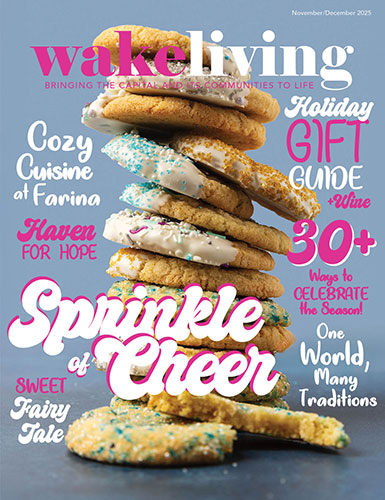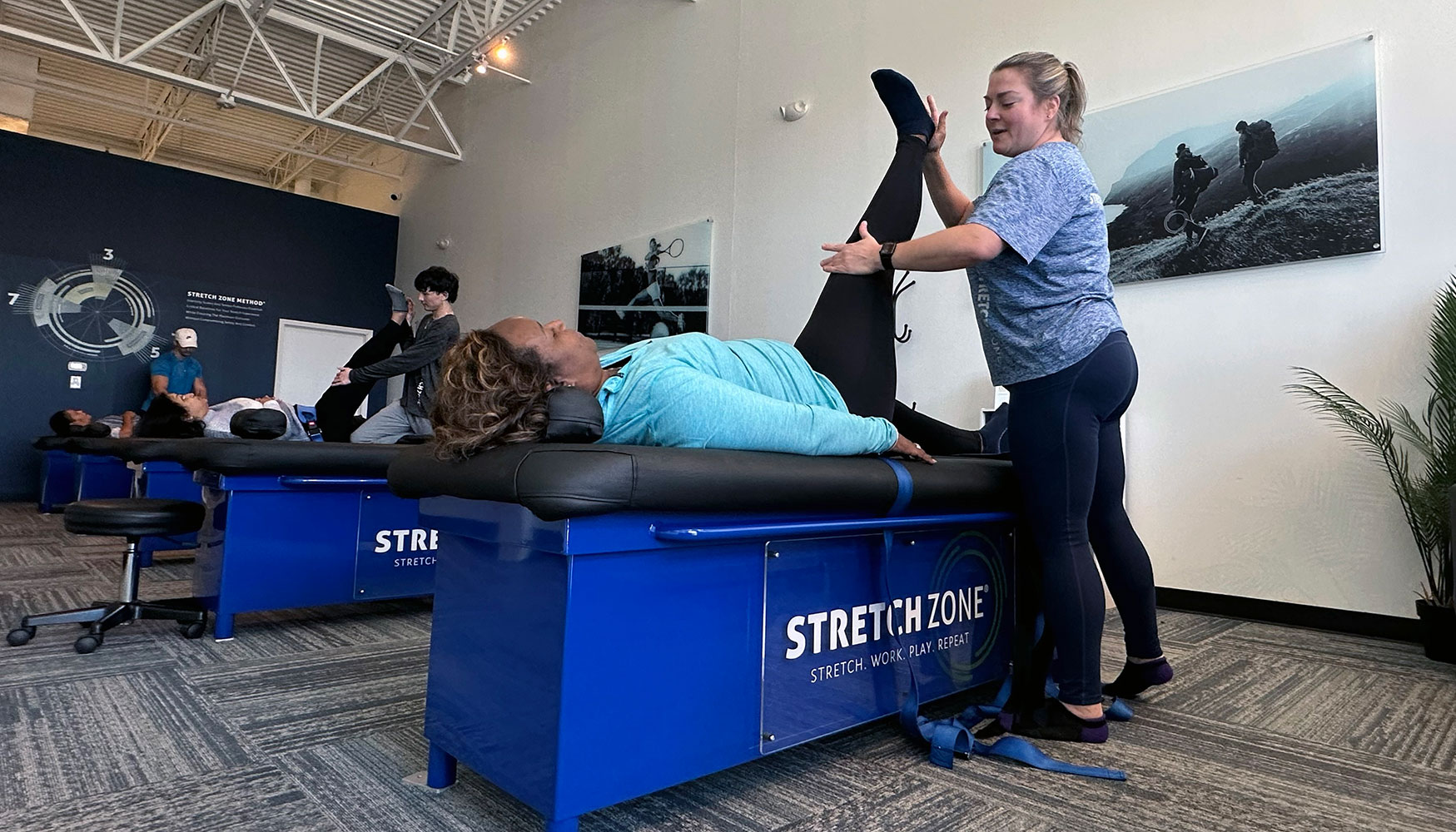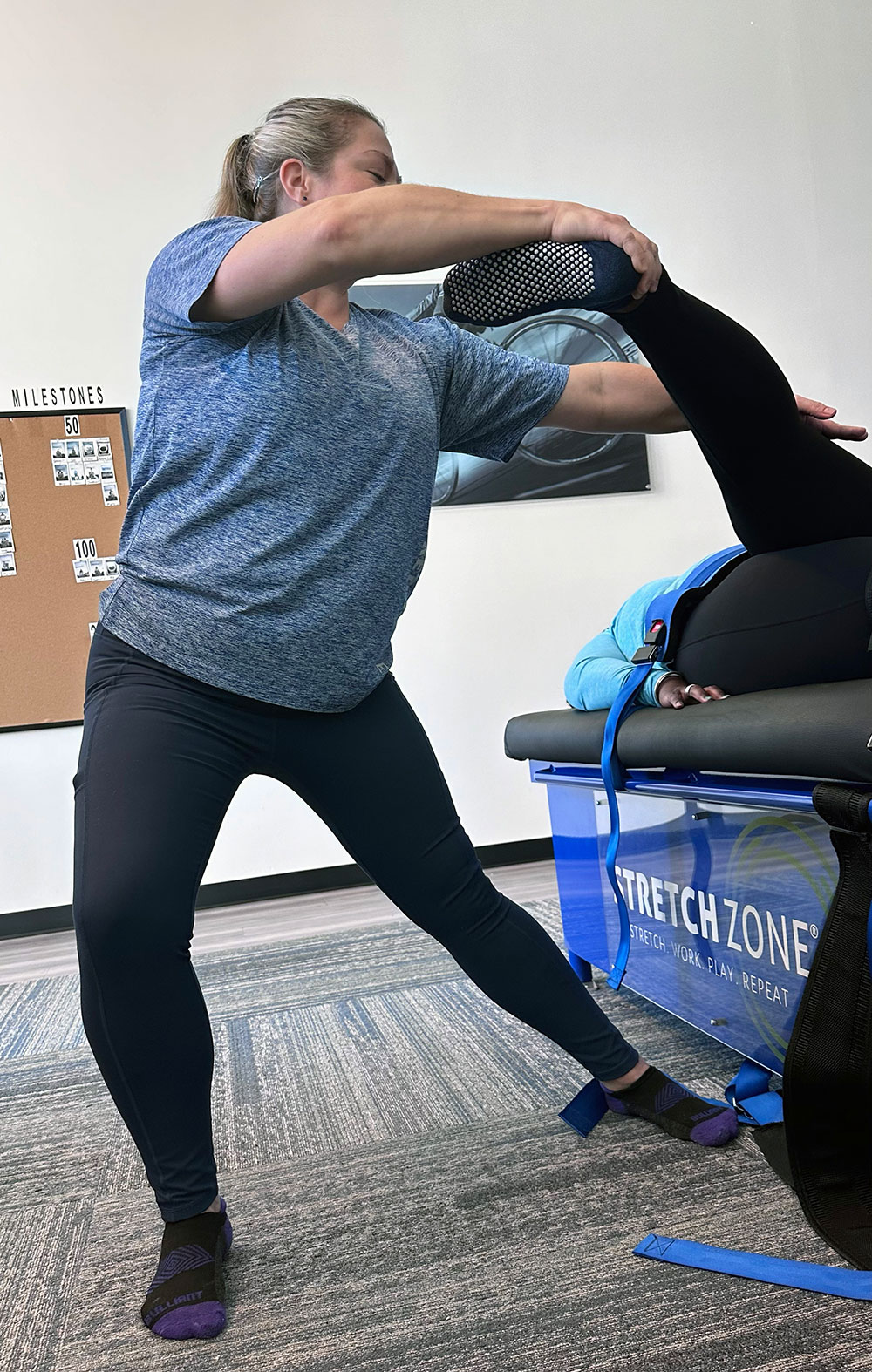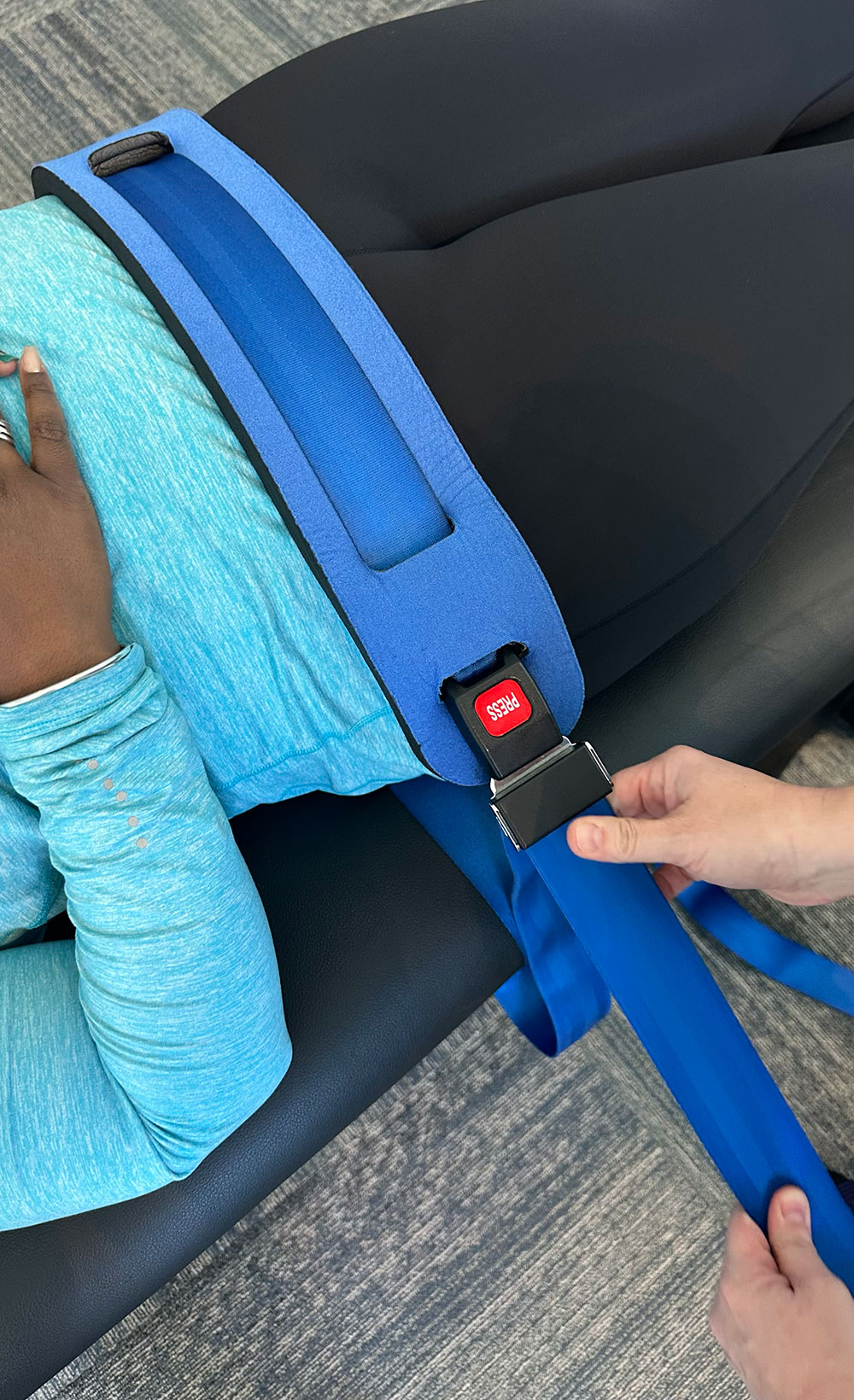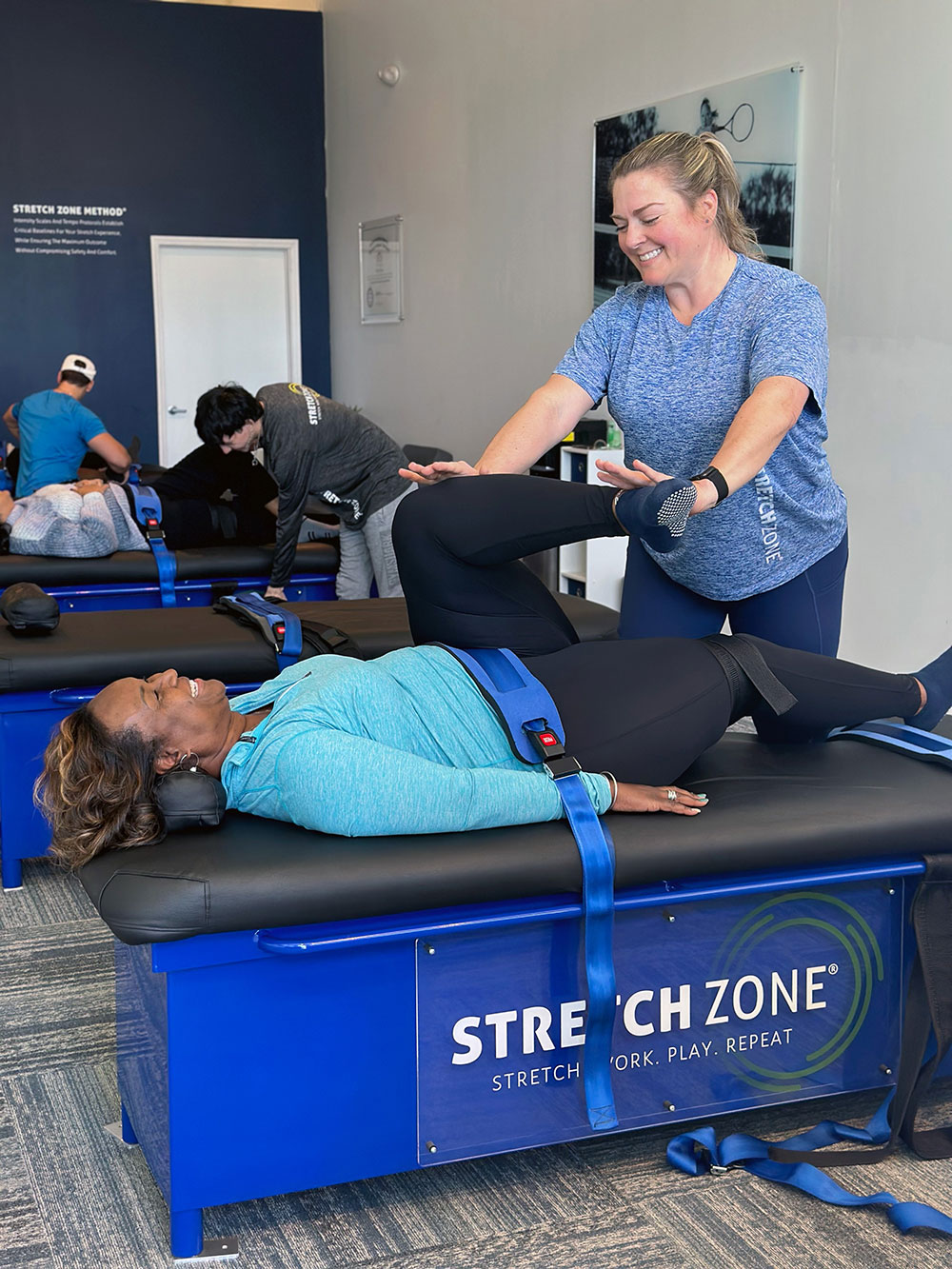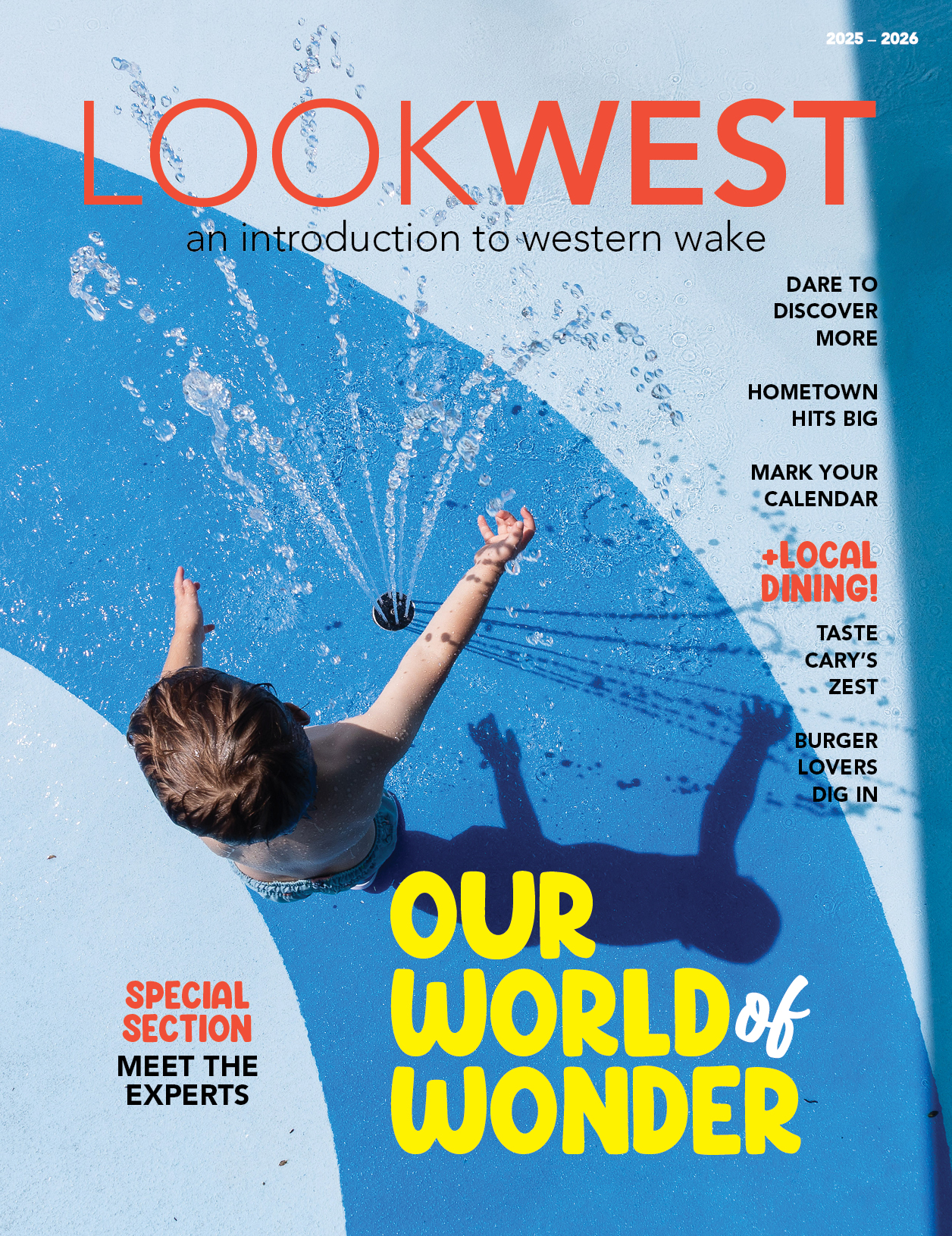“We call it lazy yoga,” says owner Landon Cheviron of sessions at Stretch Zone Cary. “We do all the work, and they get all the benefit.”
A relative newcomer as an independent service, practitioner-assisted stretching joins other modalities that improve quality of life by increasing flexibility and mobility while reducing the likelihood of injuries in both athletic pursuits and daily life.
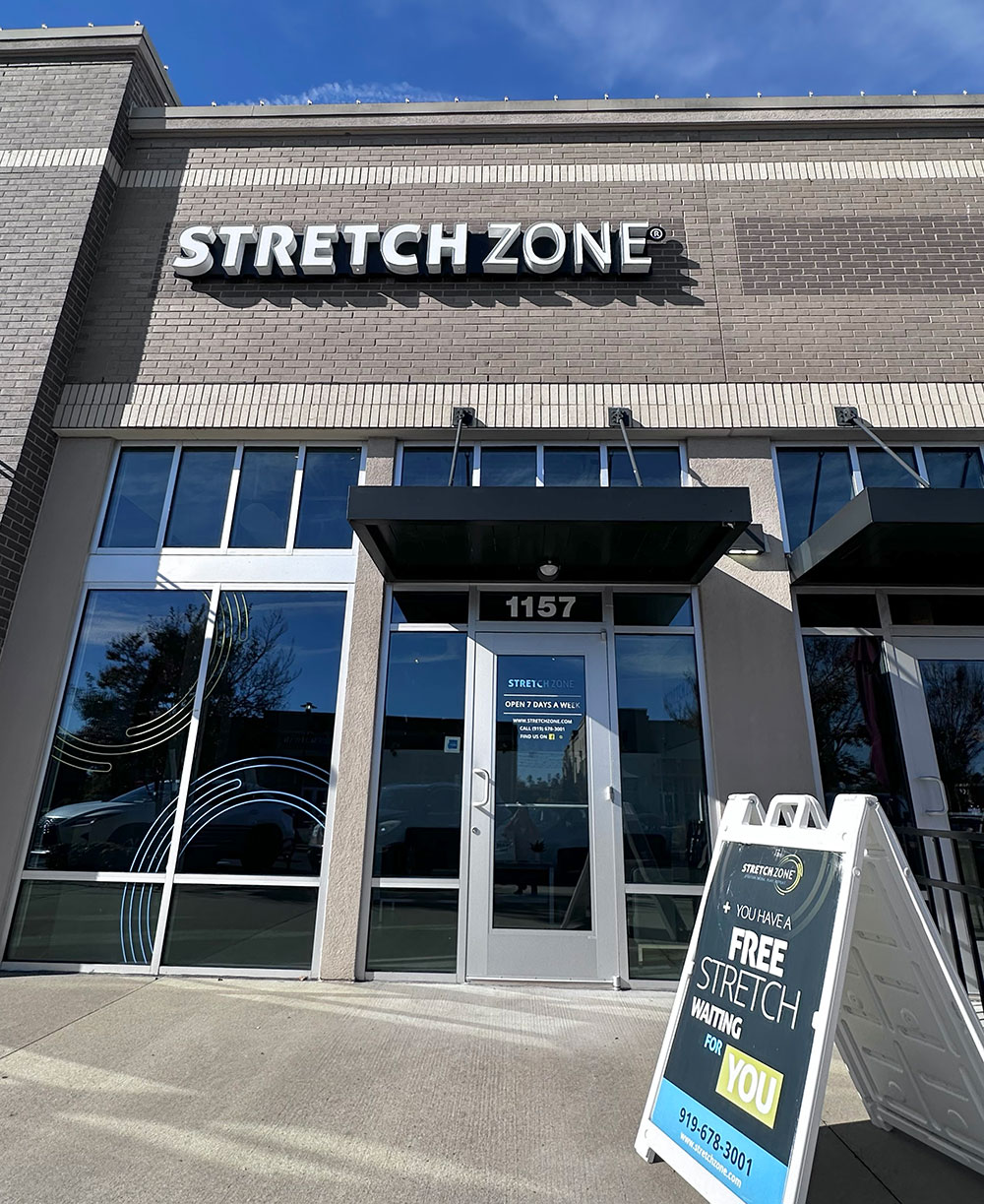
“We tell people there’s no right or wrong use of what you do,” he says, “whether it’s yoga, assisted stretching, chiropractor, massage — we have a lot of clients who do it all.”
Athletes often work with trainers and doctors to develop targeted stretching routines based on their activities and needs. But at Stretch Zone, an individualized approach is available to all.
“Our target clientele is the weekend warriors, the normal people,” Cheviron says, with most Stretch Zone clients between the ages of 45 and 65. Younger clients tend to be high school and college-age athletes looking to improve their performance. “And then we see people who are 70, 80, 90, who are losing their balance and want to help to make sure if they fall, they can be flexible enough not to get hurt.”
The process begins with a discussion of the client’s medical history, followed by an evaluation of their range of motion. Then a trained practitioner develops a plan catered to the client’s goals and schedule.
During a 30-minute session, the client lies on a comfortable platform reminiscent of a massage table. The practitioner then places a “championship belt” around the client’s waist, using additional belts to position and stabilize their limbs while isolating the desired areas.
When you stretch solo, your muscles are engaged, and your nervous system delivers a “stop before you get hurt” signal. “When you lie on the table, you can actually go farther than you think you can because you’re relaxed,” Cheviron says. “You get (safely) around that nervous system, and that way we can get you quicker benefits than if you were to stretch yourself.”
Stretch Zone uses a numbered scale of 3, 5, 7 for stretch intensity, with “3 being a light stretch, 5 being a mild stretch, and 7 being a good, deep stretch,” Cheviron says. The scale helps set goals before the session — such as a client looking for a deep stretch the day after a tough workout — and improves communication between the practitioner and client during the stretch. “That way they are in control of their stretch the whole time.”
In addition to athletes and weekend warriors, assisted stretching benefits individuals with underlying conditions including multiple sclerosis, cerebral palsy, Parkinson’s, and dementia. “A lot of these people who aren’t stretching or are sedentary during the day are not getting a lot of blood flow to their brains,” Cheviron explains. “One of my partners is a research doctor down in Florida who deals with Alzheimer’s. He says stretching can help his patients, as it increases blood flow through the body.”
For all who hop on the table, Cheviron says, “the benefits are endless.”
